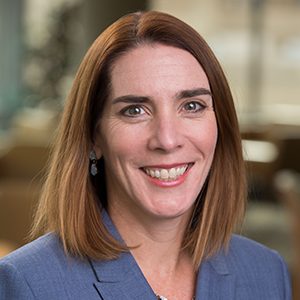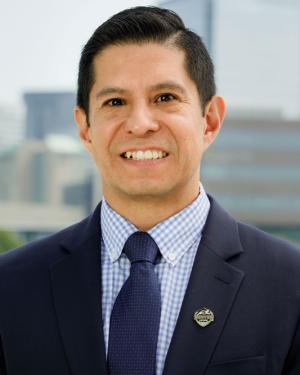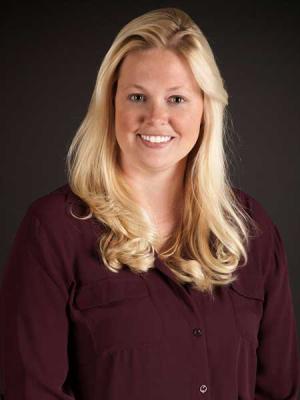Shared Governance Spotlight

Faculty Council Chair, Associate Dean for Academic and Faculty Affairs, Professor, Department of Clinical Pharmacy
Cindy O’Bryant, CU Anschutz
Faculty Council Chair
Associate Dean for Academic & Faculty Affairs, Professor, Department of Clinical Pharmacy | Anschutz Medical Campus
What does shared governance mean to you?
To me, shared governance is an empowering structure and process that allows all integral parts of our university (faculty, staff, students, university administration and the Board of Regents) to come together and elevate the work we do and impact we have on our local, national and international communities. To be successful, shared governance has to be built upon core principles of partnership, equity, accountability and ownership.
Though it can be easily overlooked in our busy day to day duties, the role of the faculty in shared governance is essential. As defined in Regent Law, Article 5, the faculty have the principal responsibility for decisions concerning pedagogy, curriculum, research, scholarly or creative work, academic ethics, and recommendations on the selection and evaluation of faculty. Innovative oversight of each of these is critical to the success of the university. Shared governance provides the faculty with more than the ability to provide suggestions and input related to these areas; it squarely places the decision making into our hands. This is one of the many reasons why it is important for faculty to understand their role in the shared governance process.
What were your motivations for joining the council committee and engaging in this type of service?
I have been actively involved in shared governance for the past 10 years. I began my involvement at the school level (Skaggs School of Pharmacy and Pharmaceutical Sciences) as a way to develop leadership skills. It was there I began to see the importance and impact of the faculty in the shared governance process and wanted to get more involved. This led me to the CU Anschutz Medical Campus Faculty Assembly. As a member of the Faculty Assembly, I took on greater leadership roles serving as secretary, vice-chair and chair. During this time, I also had the honor of serving on the Faculty Council as an at-large member and eventually as an executive committee member. At the Faculty Council level, I again have seen the importance of the shared governance process and the impact of the faculty voice related to the academic, scholarly and research enterprises that bolster CU’s success.
What makes this work rewarding? Can you share some of your committee’s current initiatives or achievements that you are or were particularly proud to contribute to?
There are a number of things that make this work rewarding. First, I would have to say it is the people who make up the Faculty Council. This is a passionate group of Faculty from diverse backgrounds and experiences. It has been an amazing experience to work with and learn from each of them. We are able to talk about the tough issues, express opinions, and come together to represent the Faculty across the four campuses. Through collaboration we are able to elevate the voice of the faculty and advocate to create an inclusive CU community focused on equity.
Second, it is the tangible impact from the work of the Faculty Council and its committees. Since I have been involved in shared governance at this level, I have seen meaningful changes to health and benefit options, divestment, women’s issues as well as expansion and strong representation of our DEI communities. This has reinforced to me that we at CU can take advantage of the knowledge, wisdom, and experience of all involved in the shared governance effort and can work together to identify meaningful opportunities to help move the institution forward. I highly encourage any Faculty (new or seasoned) to become involved in this meaningful work.

Faculty Council Committee for Racial & Ethnic Equity, Associate Professor, School of Education & Human Development
Jorge Chavez
Faculty Council Committee for Racial & Ethnic Equity
Associate Professor, School of Education & Human Development, CU Denver
What does shared governance mean to you? Why is it important?
I see shared governance as a process for collaboration, equity and accountability. As faculty, it is our responsibility to not only guide and be responsive to students, but also to shape and guide the university and CU system more broadly. Our actions and decisions put into practice the values of the institution. Faculty are uniquely situated based on our expertise, research, community work and interactions with students to create the university on a daily basis and for the long-term. As such, faculty have to have a voice and actively engage in creating the structures, policies and practices by which we function.
Tell us about your role on the Faculty Council, how long you have served in this role, and what your initial motivations were for engaging in this type of service.
I have served on the Faculty Council Committee for Racial and Ethnic Equity (CREE) for four years and served as chair for three of those years. I was invited to serve on CREE (at the time Ethnic Minority Affairs Committee) my first semester on the CU Denver campus. I felt a responsibility to accept this invitation. As a Latino faculty member and as first-generation college student I felt I could bring a perspective that historically hasn’t been present in shared governance.
What makes this work rewarding? Can you share some of your committee’s or the Council’s initiatives or achievements that you are particularly proud to have contributed to?
Shared governance means that the work we do can result in substantive change and impact. There are a few initiatives that stand out. A couple of years ago, the CU system began drafting a Strategic Plan to guide decision making for the system for years to come. However, the initial draft of the plan made no mention of our increasingly diverse student body and community or the ways in which we can welcome, develop and support students, staff and faculty from all backgrounds. CREE lobbied for a focus on Equity, Diversity, and Inclusion to be central to the new Strategic Plan. The Strategic Plan now makes Diversity, Equity, Inclusion and Access a key pillar and explicitly draws on our diversity to strengthen CU. More recently, CREE (along with the Faculty Council Women’s Committee, LGBTQ+ Committee and Disability Committee) drafted a resolution upholding academic freedom to teach on issues of race, ethnicity, gender, religion and political philosophy for faculty in response to attempt to restrict topics on which faculty could teacher, train and provide services. This resolution was unanimously supported by the Faculty Council and presented to the Board of Regents.

Associate Professor & BACJ Director, School of Public Affairs, UCCS
Anna Kosloski
Faculty Council Women’s Committee
Associate Professor & BACJ Director, School of Public Affairs, UCCS
What does shared governance mean to you? Why is it important?
To me, shared governance is about designing and implementing approaches to decision-making that value faculty voice and ownership, especially when it comes to the university’s core educational and scholarly missions. This entails intentional ways of seeking input from the wider faculty body, leading to full and transparent discussions on that input in order to reach outcomes. A true shared governance model should prioritize inclusion, respect and diverse representation.
Shared governance is important to me because by creating a decentralized decision-making process we all have a role to play and an avenue to have our voices heard. It gives all of us a responsibility in thinking about and designing processes that benefit faculty and students as a whole rather than focusing on self-interests. By supporting, respecting and valuing each other, I believe we are creating a place where faculty will be deeply invested as both teachers and scholars.
Tell us about your role on the Faculty Council, how long you have served in this role, and what your initial motivations were for engaging in this type of service.
I am finishing my second year on the Faculty Council Women’s Committee, serving as one of three UCCS representatives. I believe that serving on such committees can foster an environment that benefits all faculty. However, I am additionally motivated to help address the gender and racial inequities relating to service, retention and promotion that have been broadly documented in U.S. higher education.
In a shared governance model, I believe it is incredibly important for committee representatives to be mindful of who is not at the table and to ask how well their voices are being represented. This is why being thoughtful and intentional in seeking input is so important in a shared governance model. I make a deliberate effort to seek input so that I can bring voices of those who may not be present to the forefront. I believe diverse representation on committees is critical to a successful faculty governance model and is more likely to result in a workplace where faculty connect to each other and with the mission of the university. In such a model, an organization can demonstrate through words and more importantly actions that faculty are valued and respected. In contributing to this Committee, I believe that I am playing a small role to help shape a culture that instills this respect.
What makes this work rewarding? Can you share some of your committee’s or the Council’s initiatives or achievements that you are particularly proud to have contributed to?
I joined the Faculty Council Women’s Committee prior to COVID-19 and, just as we all did these past two years, our committee had to adapt to a virtual environment. I am particularly proud of the energy that the Committee members brought to implementing our charge even in this unusual circumstance.
While we have done many things that I believe have been impactful, I am most proud of the relationship building and information sharing that our committee has engaged in these past two years. In my experience as a faculty member, there have not been a lot of opportunities to engage across the CU campuses. This committee has really focused on sharing information about faculty experiences and concerns, as well as campus efforts specific to the pandemic. As representatives, we are each able to take that information back to our respective campuses and use it to discuss possible solutions in our own campus committees. By forging these relationships across campuses, we are creating pathways for the future that can foster true collaboration and establish communication bridges that will serve as a mechanism for information sharing. These can contribute to faculty discussions for solutions to challenges in our changing landscape.






Add new comment